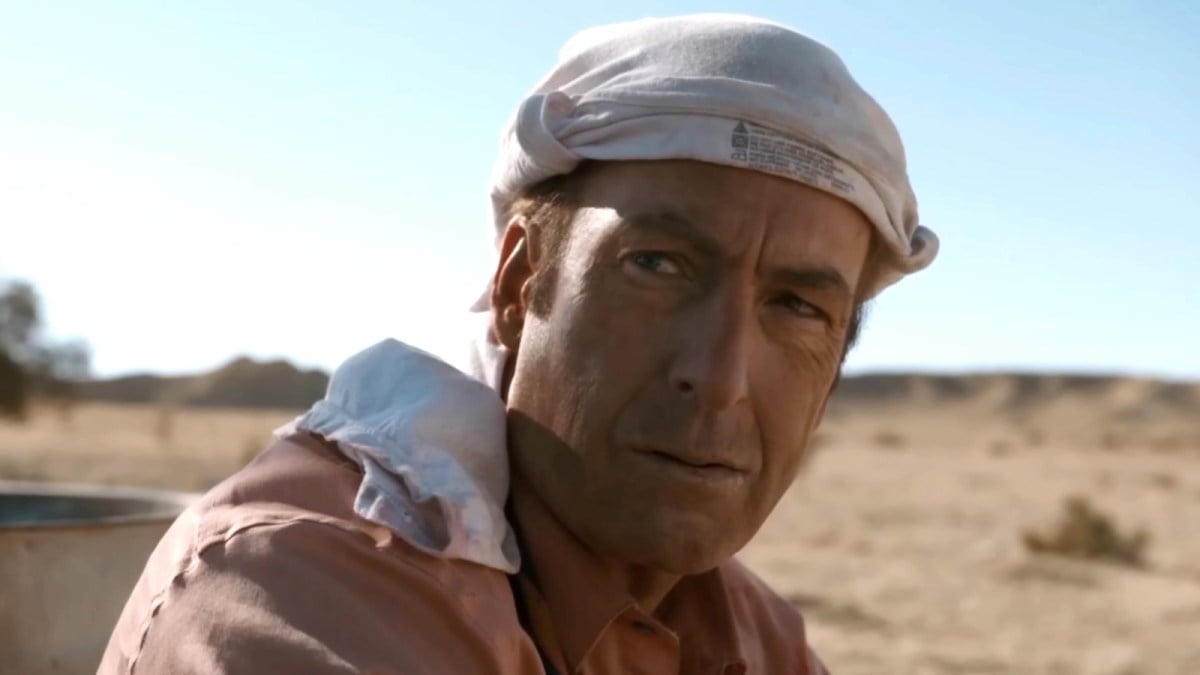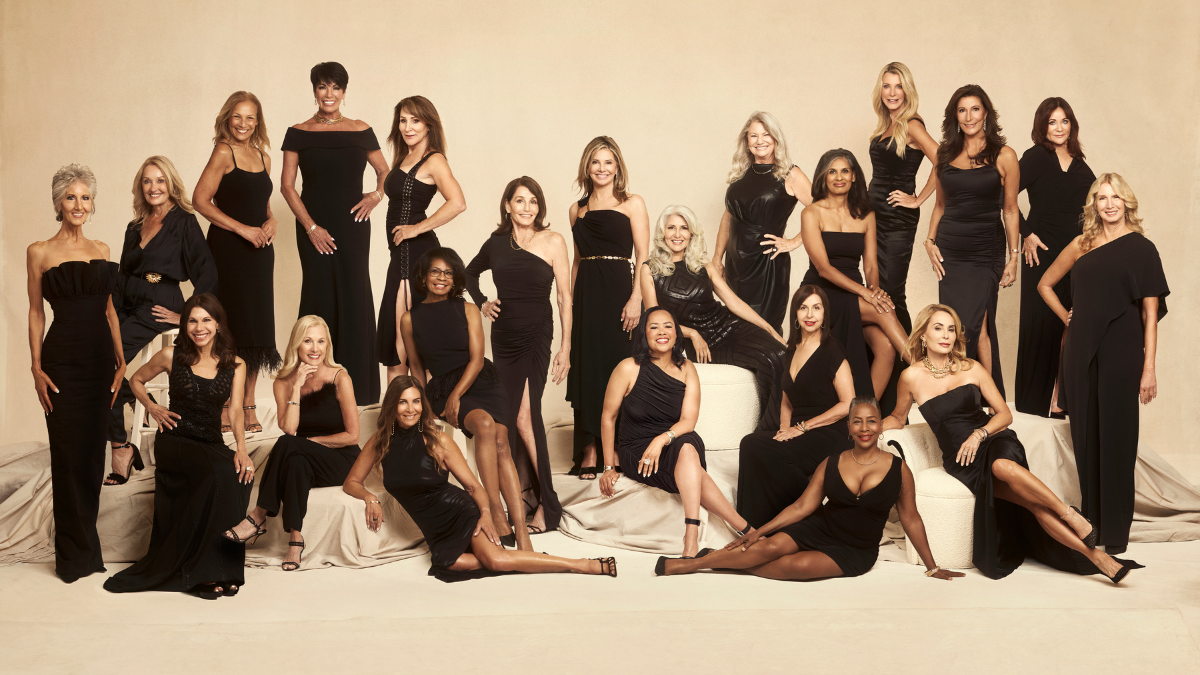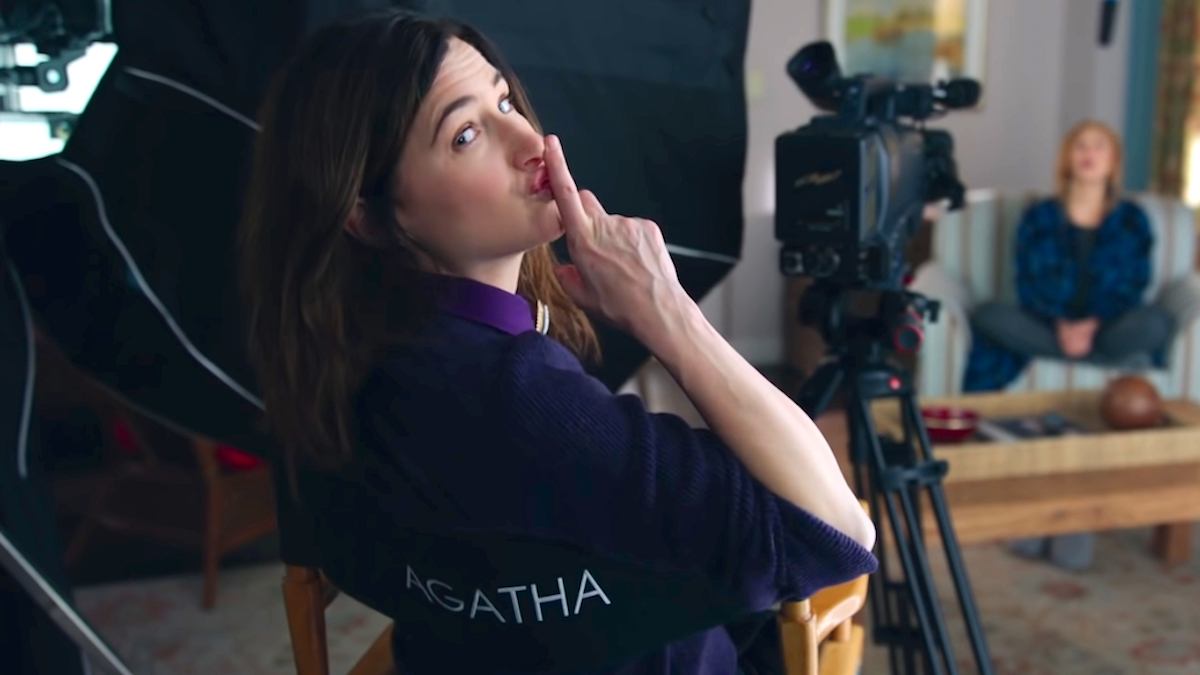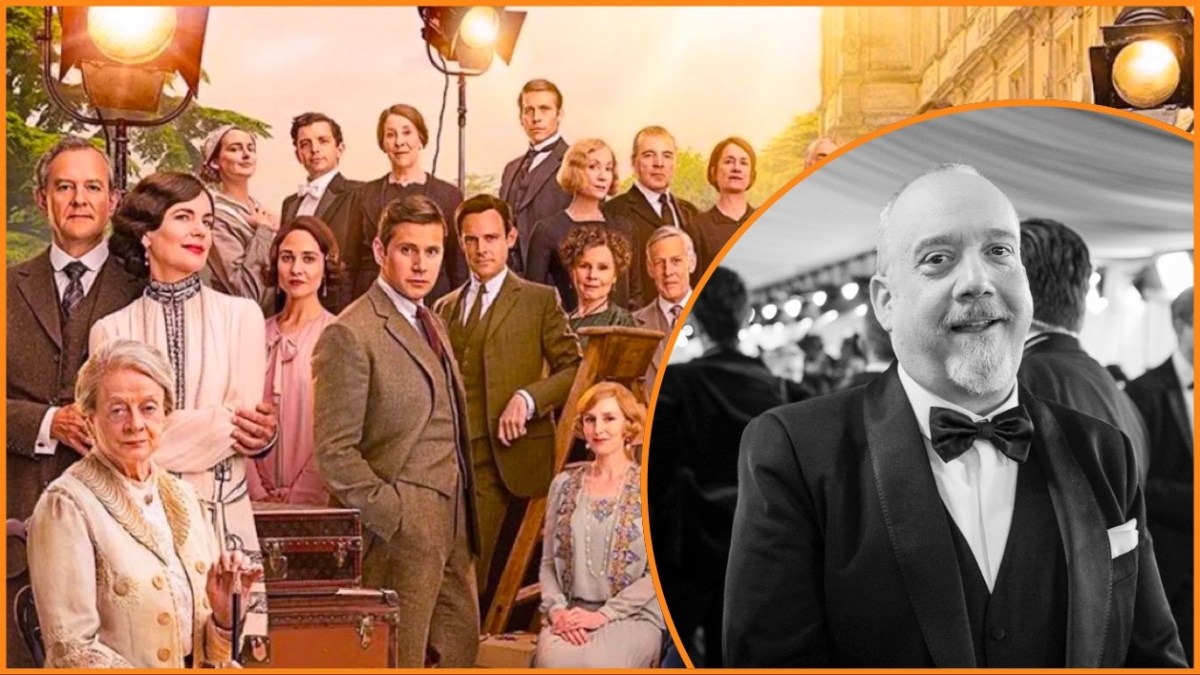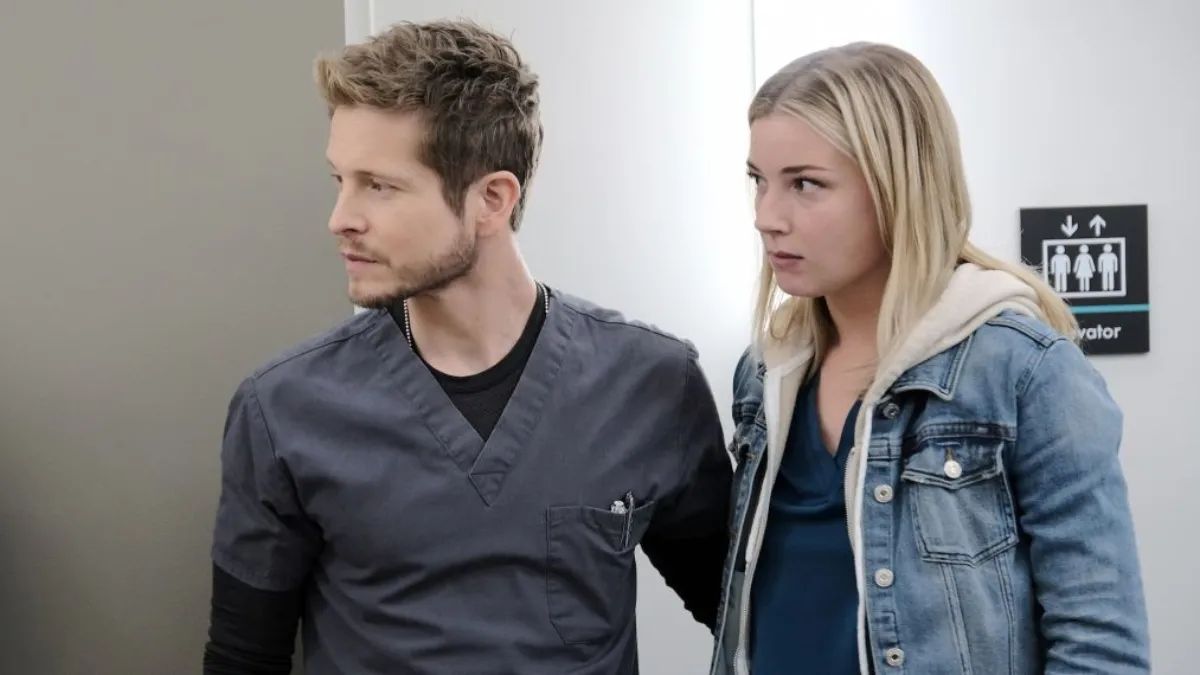Warning: this article contains heavy spoilers for the Better Call Saul series finale.
The Better Call Saul series finale, “Saul Gone,” could easily have been named “Reflections & Shadows.”
At the beginning of the series, the first genuine scene between Bob Odenkirk’s Jimmy McGill and Rhea Seehorn’s Kim Wexler is of them sharing one cigarette, propped against a wall. With minimal-yet-meaningful dialogue, the scene has layers of subtext in terms of their relationship and as individuals. It was the thing that tied them together—just being.
The finale was full of reflections on the past, both hypothetically and literally. In the penultimate scene of Better Call Saul, there is gorgeous imagery of shadows on the wall and of reflections. Kim and Jimmy, now full-circle to being called James McGill, share one final cigarette together. Both are clearly soaked in the present, but full of reflection, as shadows of who they once were together. Kim and Jimmy. Reflections and shadows.
We all went into the prequel series wondering if it could escape the shadow of its predecessor. It definitely did, becoming its own unique show. This was amplified in the final three episodes taking place largely after the events of Breaking Bad. The finale’s final scene gives us one last, ultimate moment with them both. Jimmy, behind gates, and Kim, free to some degree, still with distance between them. They linger in a long look at each before she walks away and literally turns a corner as Jimmy is cut from view by the wall. The final shot of Kim’s existence around that corner and Jimmy (or Saul) gone, totally out of view.
Forward, backward
Co-creator Peter Gould, who both wrote and directed the series finale, talked with Rolling Stone about how the final episode almost played like A Christmas Carol.
In “Saul Gone” Odenkirk’s iterations of Jimmy McGill talked with characters from the past—three of them, in fact. Through these scenes, the show revisited moments that revealed his character. Some gave him some shots at self-reflection and realization that he never got until the finale.
Throughout its run, the series jumped expertly between timelines and storylines, and it was able to go back and forth between different eras and years, which Gould stayed true in the finale. After Gene tries to flee the police and is caught, we see him change backward into Saul and eventually Jimmy again. This process really starts with a riveting scene inside his cell when Gene starts cackling maniacally at something he sees written, “My lawyer will ream ur ass,” which makes him remember that while Gene is afraid of the law, Saul is not.
How we get from Saul back to Jimmy is the real story here, though. The intertwined narrative between the “current” time of Saul/Jimmy on his way to his day in court, spliced seamlessly with the flashback shots, gives us the full picture. That creates a satisfying, fulfilling ending. The three people who we flashback to in visits with Jimmy/Saul? All three men are dead in this current time as well. You might say they are ghosts of his past.
Throughout the episode, Jimmy comes back from the beyond to leave his alter egos for dead, burying Gene first, then Saul Goodman, for good.
The first ‘ghost’
The first encounter goes back to an episode with Mike Ehrmantraut (Jonathan Banks) as he and Jimmy flee across the desert from the episode, “Bagman.” Finally finding water, a severely dehydrated and suffering Jimmy dives in and nearly gorges himself before Mike warns him to slow down or else he’ll get sick.
Then Jimmy asks Mike about what he’d do, and where he’d go, with a time machine. It’s a call-back to The Time Machine by H.G. Wells, which Jimmy’s brother Chuck is reading even in the finale, which comes into Jimmy’s possession after his brother’s death. Mike shows his character, saying that if he had a time machine, he would go back to undo what he most regretted in his whole life—accepting his first bribe.
Jimmy, true to the character no matter his name, wants to go back and become a billionaire (“Is there such a thing as a trillionaire?”). Rather than finding some root memory that could have changed the course of his and others’ lives, he wants to take advantage of Warren Buffett’s Berkshire Hathaway with his time machine. As the series largely was a character study of a few people, Mike being one of them, it was a great and revealing scene to have this flashback open the show. When Mike asks Jimmy about real regrets, he avoids them and heads back off for their trek across the desert.
White as a ghost
The next flashback we get in the finale is with Saul and Walter White (Brian Cranston). The scene picks up back as they flee the law (and others) near the end of Breaking Bad. The two of them share a dingy, secret room thanks to the man who makes disappear at the vacuum repair shop.
The two wonderful character actors come together one last time, as they await their fates near the end of Breaking Bad reprised for the Better Call Saul finale.
There is the classic tête-à-tête dialogue we’ve had so often from both Cranston’s White and Odenkirk’s McGill/Goodman with other people that is simple, complicated perfection in terms of execution and revealing dialogue delivery. Again, Jimmy, who here is Saul, asks about time travel, to which White is above and refuses to play the game as a scientist, calling that sort of time travel impossible.
Instead, White makes him face the reality of the game, it’s about regrets. So, White reveals his big life regret — even after he’s destroyed lives and murdered people and ruined his family — it’s about the money he lost by dropping out of the company he started with friends (as visited in Breaking Bad).
Saul’s answer here is about a con back when he was Slippin’ Jimmy, in which he fell too hard and actually hurt himself, a knee injury that still lingers. Neither man, after going so low they are hiding away in this shop awaiting a new identity in life, admits to any true regret as to what actually put them there together.
(We know what happens to Walter after this moment, and we’re here to reflect on Jimmy McGill, not Walter, so that’s best left to a recap of Breaking Bad or better yet, re/watching those episodes.)
The reflections still are muddied, as if in a pond during a rainstorm. But Walter shines the mirror on Jimmy as his brother Chuck would do, saying, “So, you were always like this,” with great dismissive quality, and walks away.
A lantern, a glimmer
The final ghost we get in this finale is Jimmy’s brother, Chuck McGill (Michael McKean), who also believed that Jimmy was “always like this.”
As we get one last deep peak into their relationship, the genesis of so much that unravels Jimmy into Saul and even further is unveiled, including Chuck giving Jimmy a chance to show he’s not like that, and change is possible. But the moment is fleeting. Seeing his little brother dutifully helping him out, Chuck finally shows his tender side and tries to genuinely engage with Jimmy.
It’s here we see that Jimmy can’t let go of who he believes his brother to be and that any talk they have will lead to Chuck belittling Jimmy and telling him what he’s doing wrong.
Early on, the show set up Jimmy as an almost victim of his brother, a younger sibling seeking the approval and respect of his brother he never can quite grasp. Chuck believes Jimmy is a screw-up and will never change, and Jimmy desperately wants to change his mind.
And yet, when given a chance to see Chuck differently, we see the same bias, one that unites them and ultimately destroys them, that they can’t really change who they are or how they see each other. Jimmy declines the genuine offer of a heart-to-heart with Chuck, which leaves the latter saying to his brother that they always end up having the exact same conversation.
They are both steeped in shadows because of Chuck’s fear of electricity, something Jimmy would eventually take advantage of.
As the scene ends, we see Chuck retreat into the shadows of his living room lit by only a lantern, the same device he will kick over in the future as he commits suicide following Jimmy embarrassing him in court and ruining his career (and life).
A moment, in court, naturally
Finally, as Gene changes back into Saul, the character masterfully plays the legal system from the inside, getting a roughly 200-year sentence bargained down to just seven years.
However, he learns that the still love of his life, Kim, has already confessed to their role in Howard Hamlin’s downfall and death. This begins a different kind of reflection in Saul, which eventually gets him back to Jimmy, and even James McGill.
Just when it seems he might do something extremely wicked in court, we learn he lied so that Kim would come and be in person as he delivers his full confession of what he did and how in control he was of the Walter White meth empire. That he was not a puppet, he was the puppet master, and even as his reveal and confession all but damned any chance of the plea deal being fulfilled, he wanted his day in court, to shine as Saul one more time.
As Saul, he turns around to meet Kim’s eyes and sees that the desired effect has not landed, and he sees that she is still looking deep into him, trying to get his true soul to come out and genuinely ditch Saul to be Jimmy again.
And at that moment, he does, finally admitting that even though Kim left, it was him who ran away. He could not deal with reality, and the hardest reality of all that still burrowed deep inside him, that he felt guilty and responsible (rightfully so) for his brother’s suicide.
The mask falls from both of their faces, as we see the Kim that loved Jimmy, even barely there, come back again for a moment. And the façade of Saul fades away as well, and James McGill is standing there as himself once again.
The final exhales
That leaves us with Jimmy, whom the inmates seem too fond of for his work as criminal attorney Saul Goodman, back mixing dough again in the prison’s kitchen, as he once did as Gene at Cinnabon.
He and we learn that his lawyer is there, and spot-on, it’s Kim, waiting there for him and posing as his lawyer thanks to her never-expired New Mexico Bar Association card. One more look at the brilliance and dedication that made Kim Wexler.
Knowing that normal visiting rights would put them on two sides on a pane of glass, the fact she poses as his lawyer so they can share a room together, unguarded, and unwatched, reveals so many utter layers of breathtaking dept that this show has shown us again and again, both visually and through nuance.
This moment shows the real love and affection between the two. Somehow, she still holds a place in her heart for the real James McGill, and they still hold it for each other, even if it’s barely a shadow of who they once were, together and separately, a mere reflection of their lives, their relationship, and the entire show.
Not much is said, and not much needs to be.
There is elegance in the way Seehorn delivers the line, “Hi, Jimmy” upon seeing him that speaks immense volumes. She seems relieved to see him being himself again, as Jimmy. In turn, this hello scrapes that last layer of mask off him too, as he returns the hi, almost realizing that he actually is Jimmy, for real now.
The way they pass or even take, the cigarette from one another, having this moment, this smoke, these exhalations, together. They banter about how he masterfully had his plea down to seven years, yet will now be serving out 86 years as a result of his confession (also, when a restaurant runs out of a dish or ingredient, someone in the kitchen will let everyone else know that it’s 86’d).
We see so much on Jimmy’s face changed, back from Gene and Saul to himself again.
The scene also lets the show’s costar, Seehorn, show off her immense subtle skills all told through her face and eyes. She shows the respect Kim has for Jimmy’s intelligence, diligence, and sometimes self-destructive persistence because she sees it in herself, and they don’t need to talk about reflecting, as they are both out of the shadows once and for all, living in the consequences of their current and present lives.
The beauty of only two flickers of color — the lighter flame and the glow of the cigarette — is brilliant in subconsciously (and either subtly or not) showing the flicker of hope for them, as people, maybe not together, but always linked together in spirit. Moments after that, after one final look into each other’s eyes from across a fenced-off distance, Jimmy gives his signature finger guns to Kim, she soaks it in, turns the corner, and walks off.
And with that, Jimmy is gone, and Kim walks out of our lives, forever, leaving us only with shadows and reflections.

